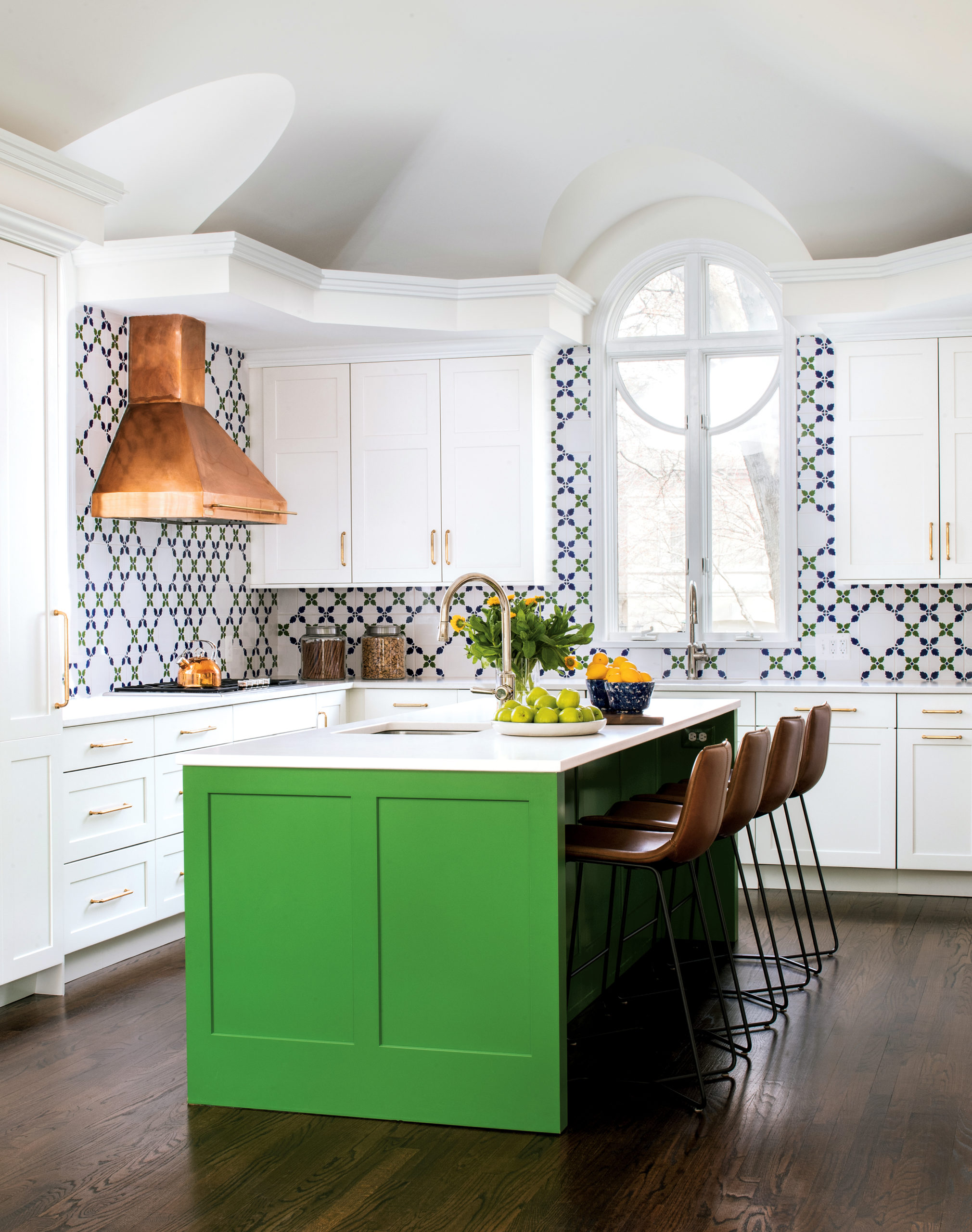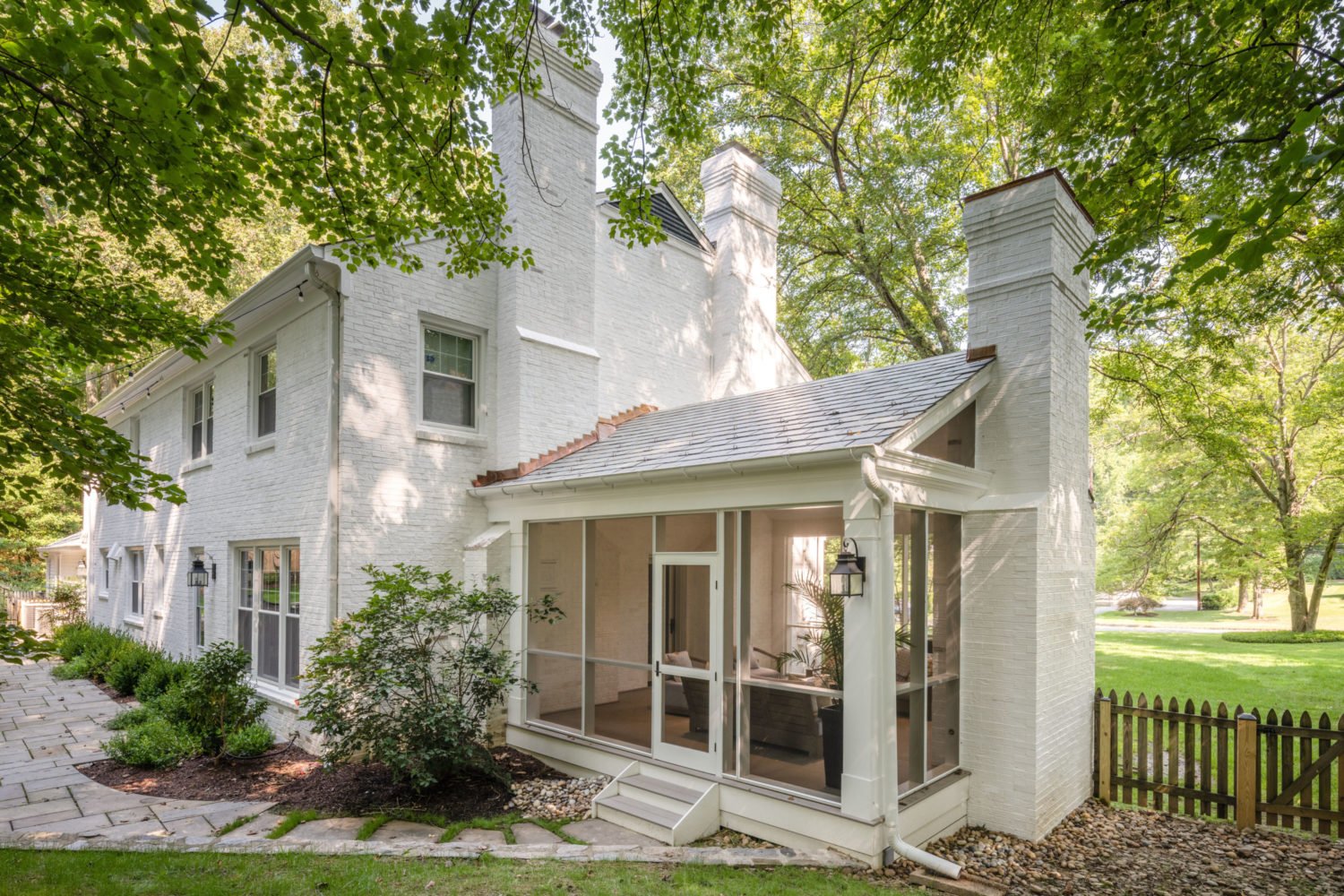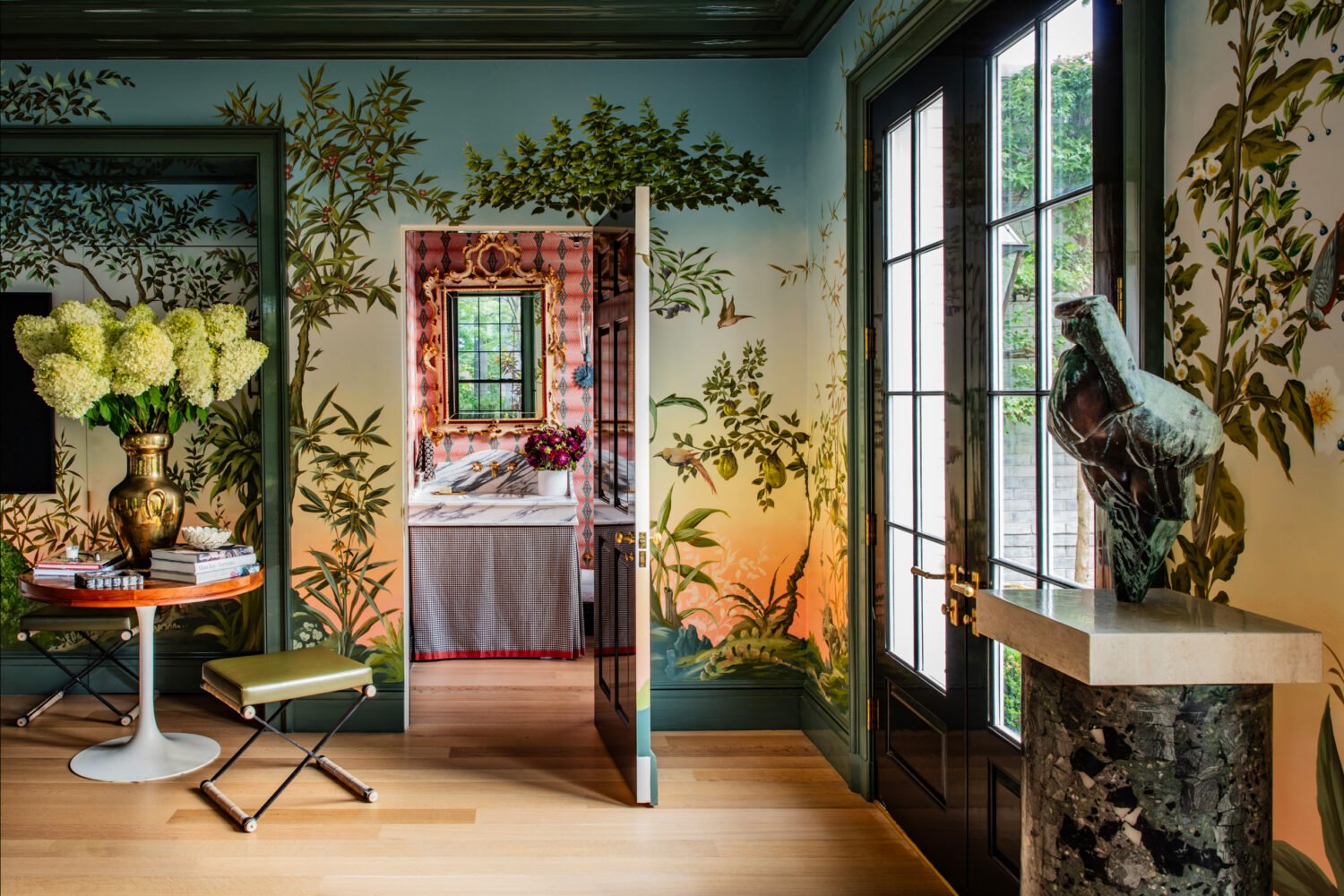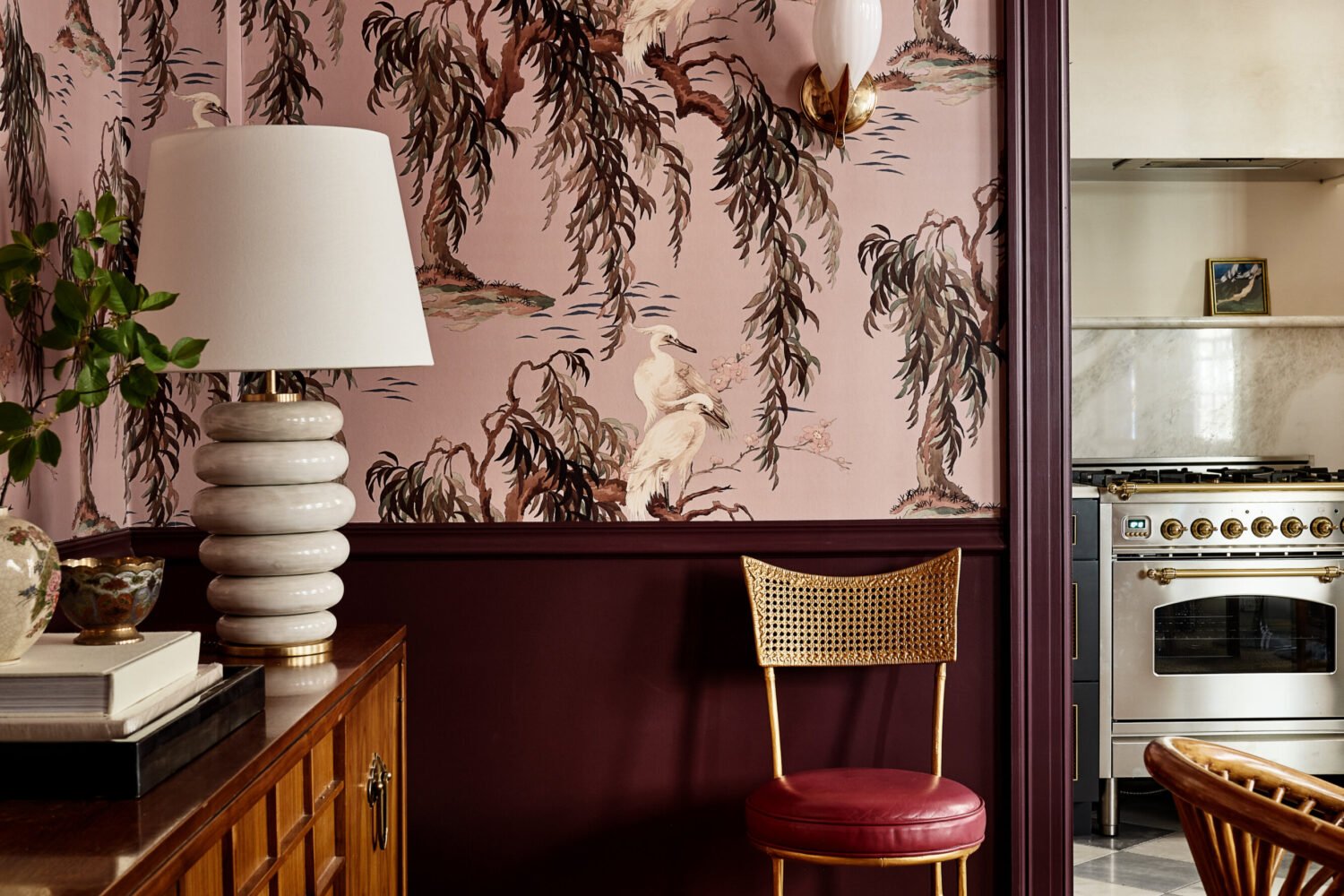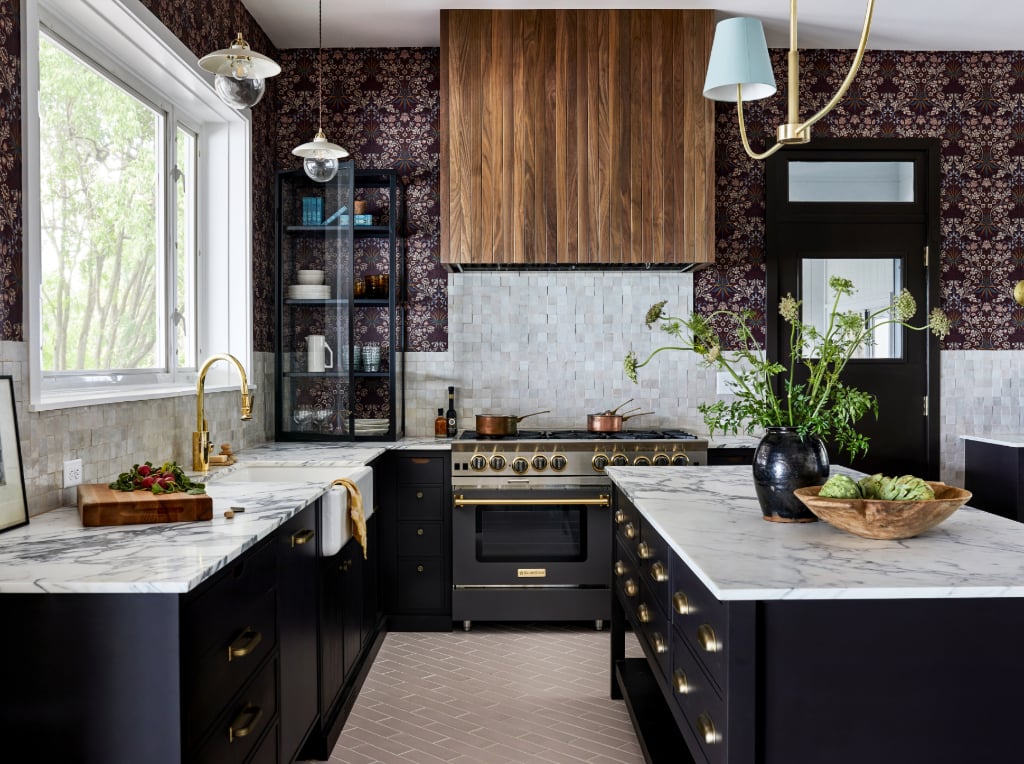If you’re going to spend a lot of time in the kitchen, it might as well be in a bright, cheerful spot that makes you happy—even when you’re washing dishes. That was the thinking that spurred this Forest Hills renovation by Nadia Subaran of Aidan Design.
The house, built in 1943, had seen several kitchen renovations over the years, which left a few too many quirky architectural flourishes. First, Subaran streamlined the bulkhead and got rid of some decorative columns, allowing the stunning circular windows to be front and center. From a functional standpoint, the single oven and small, inefficient island would have to go, though the range’s stunning copper hood got to stay. The client, a family of four, likes to cook and bake together, so a double oven was necessary, as was a bigger island with a second sink.
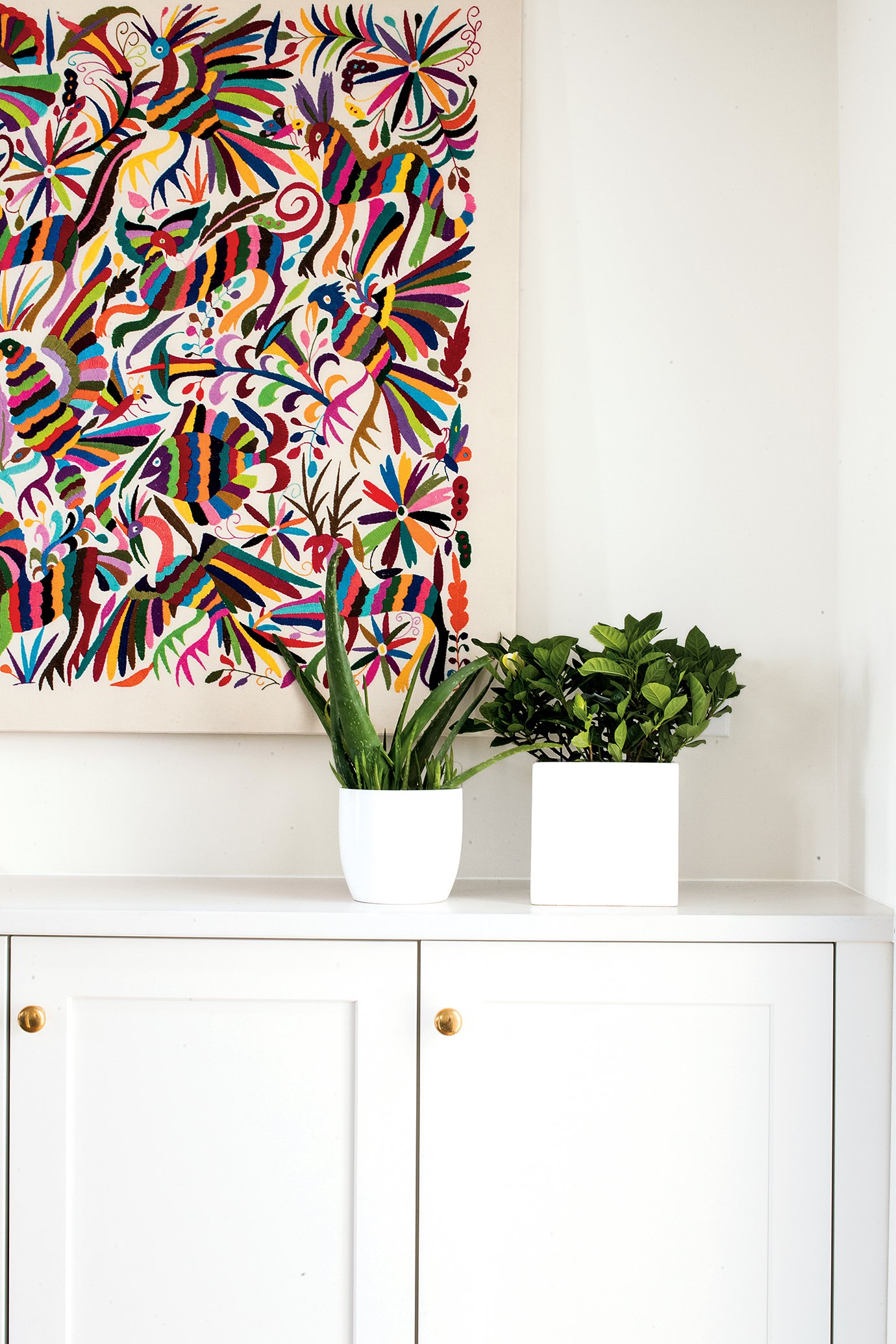
Inspired by her love of Mexican Otomi textiles and Swedish midcentury fabrics, the homeowner always knew that vibrant pops of color would figure prominently in the mostly white kitchen. That island turned out to be the perfect vehicle for a bold paint choice. “When we saw that spring green, there was no going back,” says Subaran.
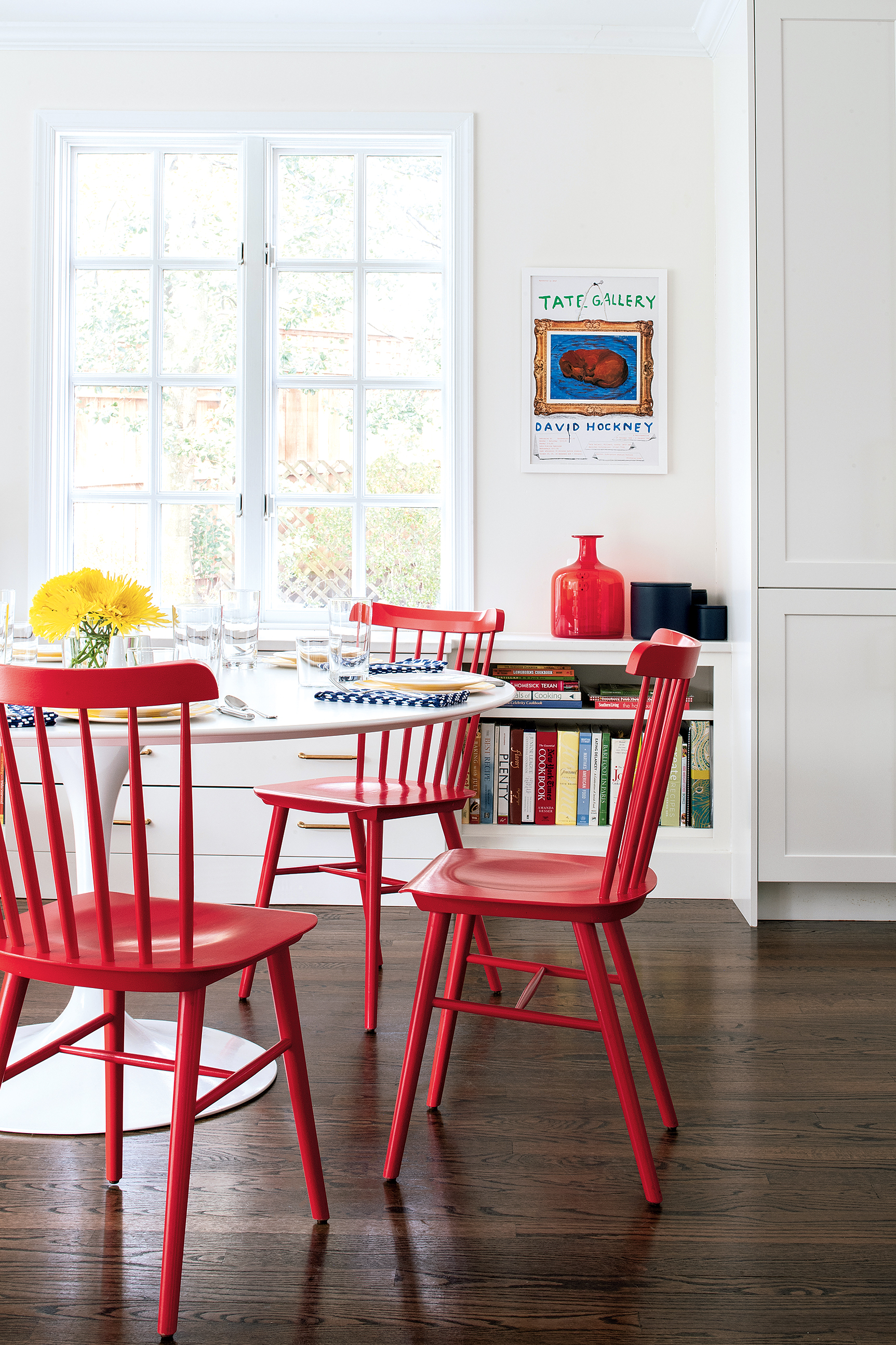
While finding the right hue for the island happened quickly, the backsplash was another story. The owner was smitten with a tile she’d seen in a photograph from almost 20 years ago. She tracked down the kitchen’s designer, who couldn’t recall the manufacturer. Then she found a painter who could recreate it, but the colors weren’t quite right. Eventually, she traced the handmade clay tile to an importer in Austin. Nearly a year and a trip to Texas later, she finally had her backsplash. “When the tile was delivered and installed, everything came together beautifully,” says Subaran. “You’d never know that tile created so much drama.”
This article appears in the October 2019 issue of Washingtonian.

